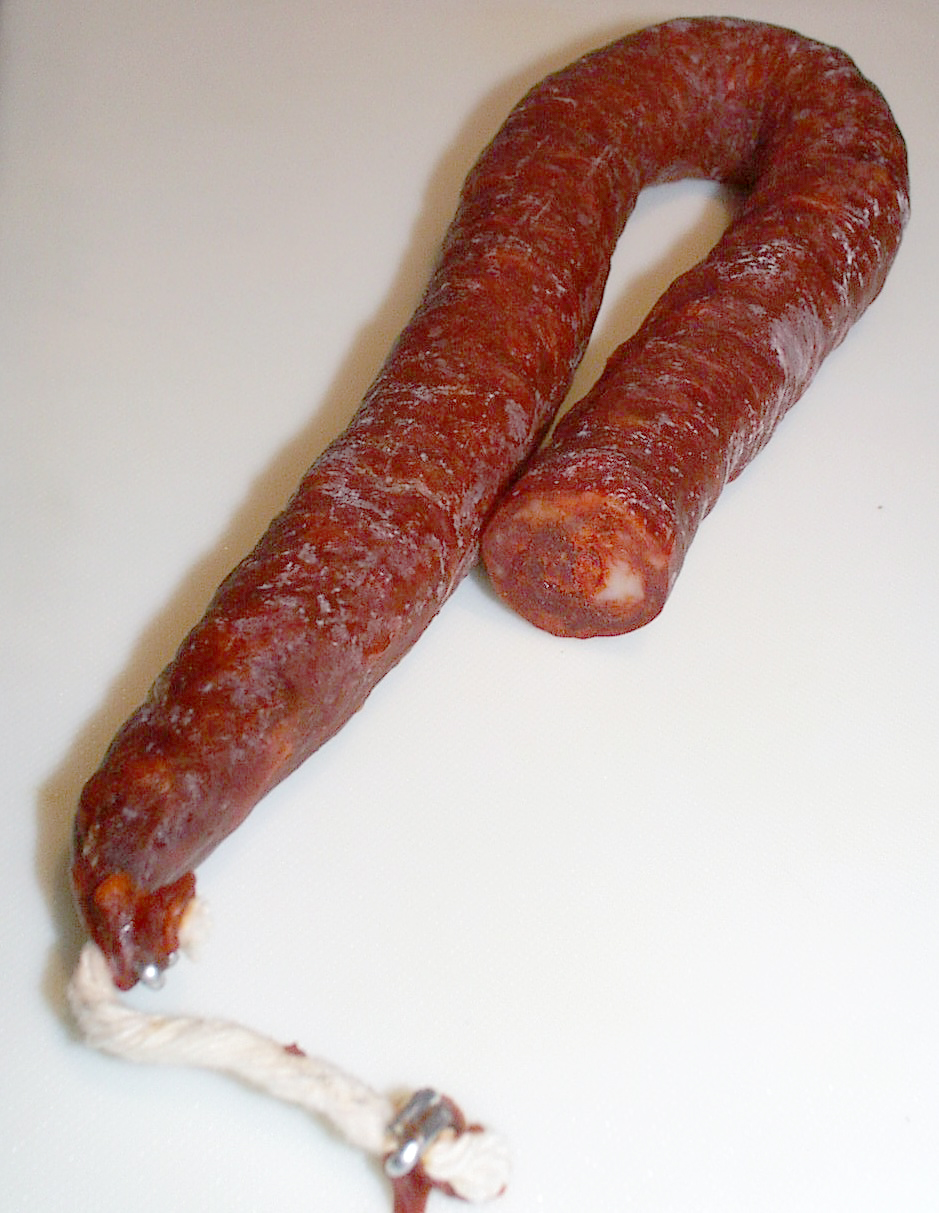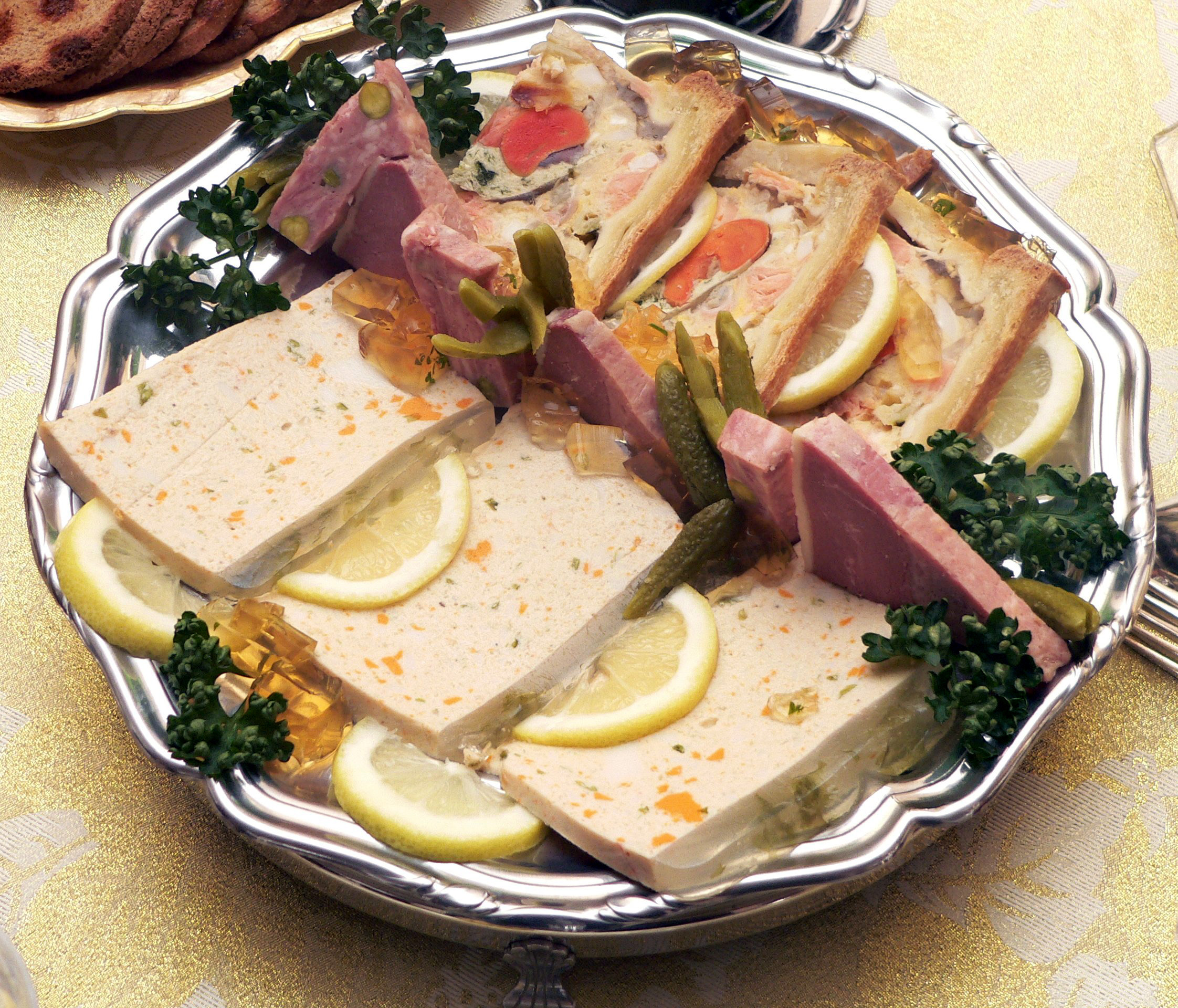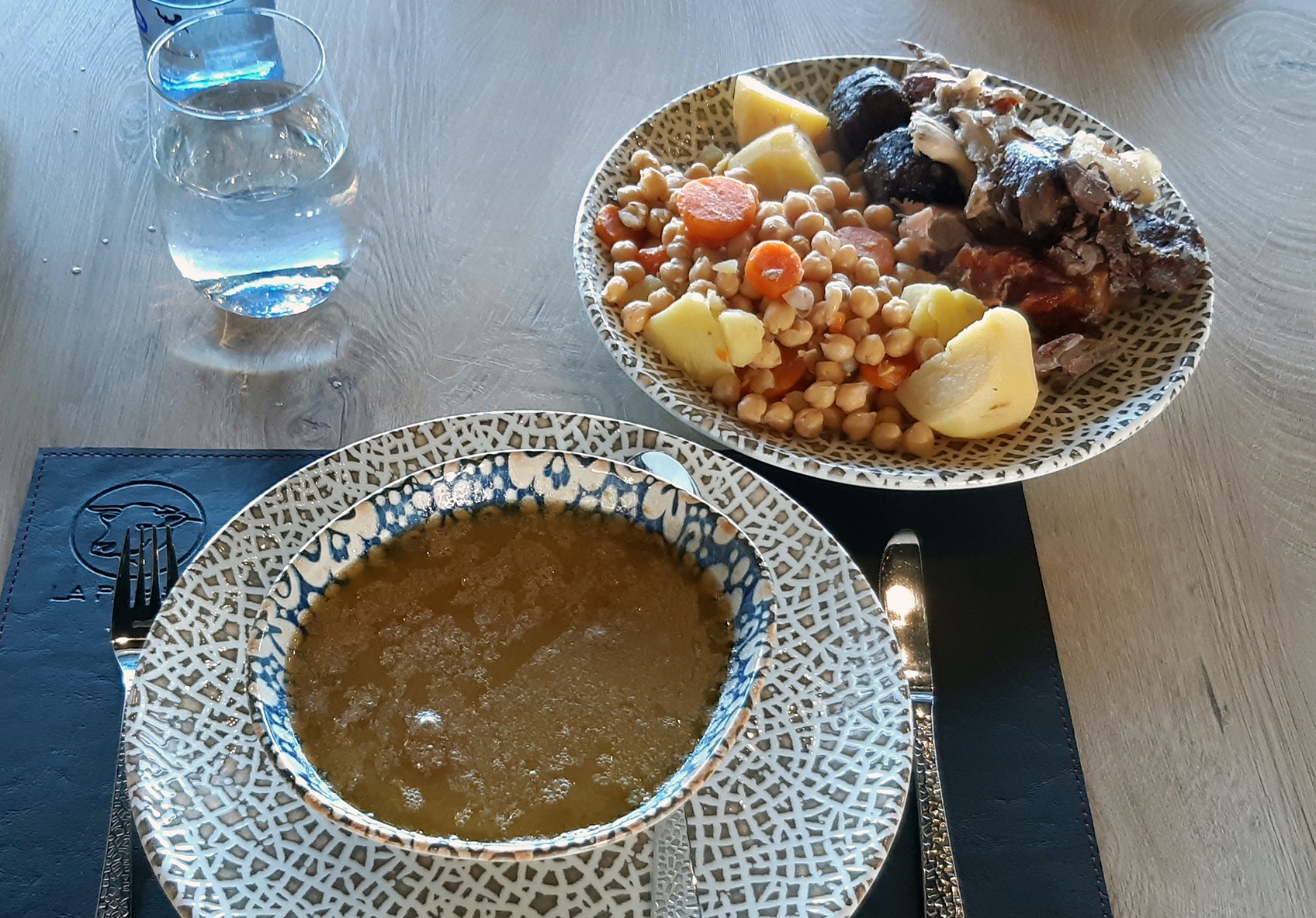|
Callos
Callos is a stew common across Spain, and is considered traditional to Madrid. In Madrid, it is referred to as ''callos a la madrileña. It contains beef tripe and chickpeas, blood sausage and peppers. Chorizo sausage may also be used. Another simple recipe of callos is boiling the tripe until tender, slicing it into strips and cooking it in pork and beans with peppers. It is common to add cheese to it to enhance the flavour. See also * Cocido * List of legume dishes * List of stews This is a list of notable stews. A stew is a combination of solid food ingredients that have been Cooking, cooked in liquid and served in the resultant gravy. Ingredients in a stew can include any combination of vegetables (such as carrots, potato ... References Spanish soups and stews Offal dishes Chickpea dishes Spanish legume dishes {{spain-cuisine-stub ... [...More Info...] [...Related Items...] OR: [Wikipedia] [Google] [Baidu] |
Beef Tripe
Tripe is a type of edible lining from the stomachs of various farm animals. Most tripe is from cattle, pigs and sheep. Types of tripe Beef tripe Beef tripe is made from the muscle wall (the interior mucosal lining is removed) of a cow's stomach chambers: the rumen (blanket/flat/smooth tripe), the reticulum (honeycomb and pocket tripe), and the omasum (book/bible/leaf tripe). Abomasum (reed) tripe is seen less frequently, owing to its glandular tissue content. Other animals Tripe refers to cow (beef) stomach, but includes stomach of any ruminant including cattle, sheep, deer, antelope, goat, ox, giraffes, and their relatives. , the related Spanish word, also refers to culinary dishes produced from any animal with a stomach. In some cases, other names have been applied to the tripe of other animals. For example, tripe from pigs may be referred to as ''paunch'', ''pig bag'', or ''hog maw''. Washed tripe Washed tripe is more typically known as dressed tripe. To dress the ... [...More Info...] [...Related Items...] OR: [Wikipedia] [Google] [Baidu] |
List Of Stews
This is a list of notable stews. A stew is a combination of solid food ingredients that have been Cooking, cooked in liquid and served in the resultant gravy. Ingredients in a stew can include any combination of vegetables (such as carrots, potatoes, beans, onions, Capsicum, peppers, tomatoes, etc.), and frequently with meat (especially tougher meats suitable for moist slow-cooking) such as beef. Poultry, pork, Lamb and mutton, lamb or mutton, sausages, and seafood are also used. Stews Unsorted * Capra e fagioli * Ginataang kalabasa * Ginataang labong * Kokotxas * Kontomire stew * Or lam * Pepián * Waknatoy See also * Fish stew – includes a list of many fish stews * List of Azerbaijani soups and stews * List of fish and seafood soups * List of Japanese soups and stews * List of soups * List of Spanish soups and stews References {{Soups Stews, Soup-related lists, ... [...More Info...] [...Related Items...] OR: [Wikipedia] [Google] [Baidu] |
Beef Tripe
Tripe is a type of edible lining from the stomachs of various farm animals. Most tripe is from cattle, pigs and sheep. Types of tripe Beef tripe Beef tripe is made from the muscle wall (the interior mucosal lining is removed) of a cow's stomach chambers: the rumen (blanket/flat/smooth tripe), the reticulum (honeycomb and pocket tripe), and the omasum (book/bible/leaf tripe). Abomasum (reed) tripe is seen less frequently, owing to its glandular tissue content. Other animals Tripe refers to cow (beef) stomach, but includes stomach of any ruminant including cattle, sheep, deer, antelope, goat, ox, giraffes, and their relatives. , the related Spanish word, also refers to culinary dishes produced from any animal with a stomach. In some cases, other names have been applied to the tripe of other animals. For example, tripe from pigs may be referred to as ''paunch'', ''pig bag'', or ''hog maw''. Washed tripe Washed tripe is more typically known as dressed tripe. To dress the ... [...More Info...] [...Related Items...] OR: [Wikipedia] [Google] [Baidu] |
List Of Legume Dishes
This is a list of legume dishes. A legume is a plant in the family Fabaceae (or Leguminosae), or the fruit or seed of such a plant. Legumes are grown agriculturally, primarily for their food grain seed (e.g. beans and lentils, or generally pulse), for livestock forage and silage, and as soil-enhancing green manure. Legume dishes 0–9 * * A * * * * B * * * * * * * * * * * * * * * * * * * C * Callos * Caparrones * Cassoulet * Chana masala * Chapea * Cholent * Chili con carne * Chole bhature * Ciceri e Tria * Cocido lebaniego * Cocido madrileño * Cocido Montañés * Cowboy beans D * * * * * * * * * * E * F * * * * * * * * * * G * * * * * * * H * * J * * K * * * * * * * * L * * * * * M * * * * * * * * * * N * O * P * * * * * * * * * * * * * * * * R * * * * * * * * * * * S * * * * * * * T * * * * U * * V * W * Y * See ... [...More Info...] [...Related Items...] OR: [Wikipedia] [Google] [Baidu] |
Spain
, image_flag = Bandera de España.svg , image_coat = Escudo de España (mazonado).svg , national_motto = ''Plus ultra'' (Latin)(English: "Further Beyond") , national_anthem = (English: "Royal March") , image_map = , map_caption = , image_map2 = , capital = Madrid , coordinates = , largest_city = Madrid , languages_type = Official language , languages = Spanish language, Spanish , ethnic_groups = , ethnic_groups_year = , ethnic_groups_ref = , religion = , religion_ref = , religion_year = 2020 , demonym = , government_type = Unitary state, Unitary Parliamentary system, parliamentary constitutional monarchy , leader_title1 = Monarchy of Spain, Monarch , leader_name1 = Felipe VI , leader_title2 = Prime Minister of Spain ... [...More Info...] [...Related Items...] OR: [Wikipedia] [Google] [Baidu] |
Chorizo
Chorizo (, from Spanish ; similar to but distinct from Portuguese ) is a type of pork cured meat originating from the Iberian Peninsula. In Europe, chorizo is a fermented, cured, smoked meat, which may be sliced and eaten without cooking, or added as an ingredient to add flavor to other dishes. Elsewhere, some sausages sold as chorizo may not be fermented and cured, and require cooking before eating. Spanish and Portuguese are distinctly different products, despite both getting their smokiness and deep red color from dried, smoked, red peppers (/). Iberian chorizo is eaten sliced in a sandwich, grilled, fried, or simmered in liquid, including apple cider or other strong alcoholic beverages such as . It is also used as a partial replacement for ground (minced) beef or pork. Names The word ''chorizo'' probably comes from the Late Latin 'salted', via the Portuguese ; it is a doublet of the Spanish word 'sausage', which was transmitted through Italian . In English, ''cho ... [...More Info...] [...Related Items...] OR: [Wikipedia] [Google] [Baidu] |
Offal Dishes
Offal (), also called variety meats, pluck or organ meats, is the organs of a butchered animal. The word does not refer to a particular list of edible organs, which varies by culture and region, but usually excludes muscle. Offal may also refer to the by-products of milled grains, such as corn or wheat. Some cultures strongly consider offal as food to be taboo, while others use it as everyday food or even as delicacies. Certain offal dishes—including ''foie gras'', ''pâté'', and haggis —are internationally regarded as gourmet food in the culinary arts. Others remain part of traditional regional cuisine and may be consumed especially during holidays. This includes sweetbread, Jewish chopped liver, U.S. chitterlings, Mexican menudo, as well as many other dishes. On the other hand, intestines are traditionally used as casing for sausages. Depending on the context, ''offal'' may refer only to those parts of an animal carcass discarded after butchering or skinning; offal not ... [...More Info...] [...Related Items...] OR: [Wikipedia] [Google] [Baidu] |
Spanish Soups And Stews
Spanish might refer to: * Items from or related to Spain: **Spaniards are a nation and ethnic group indigenous to Spain **Spanish language, spoken in Spain and many Latin American countries **Spanish cuisine Other places * Spanish, Ontario, Canada * Spanish River (other), the name of several rivers * Spanish Town, Jamaica Other uses * John J. Spanish (1922–2019), American politician * "Spanish" (song), a single by Craig David, 2003 See also * * * Español (other) * Spain (other) * España (other) * Espanola (other) * Hispania, the Roman and Greek name for the Iberian Peninsula * Hispanic, the people, nations, and cultures that have a historical link to Spain * Hispanic (other) * Hispanism * Spain (other) * National and regional identity in Spain * Culture of Spain * Spanish Fort (other) Spanish Fort or Old Spanish Fort may refer to: United States * Spanish Fort, Alabama, a city * Spanish Fort (Colorad ... [...More Info...] [...Related Items...] OR: [Wikipedia] [Google] [Baidu] |
Cocido
() or ''cozido'' () is a traditional stew eaten as a main dish in Spain, Portugal, Brazil and other Hispanophone and Lusophone countries. Etymology In Spanish, ''cocido'' is the past participle of the verb ''cocer'' ("to boil"), so it literally means "boiled hing. In Portuguese, the word ''cozido'' means "cooked", "boiled" or "baked", being the past participle of the verb ''cozer'' ("to cook", "to boil", or "to bake"). Preparation and ingredients Cocido is made of various meats (pork, beef, chicken, mutton), embutidos and vegetables like cabbage, turnips, parsnips, potatoes, carrots and chickpeas (''garbanzos''). Other foods (such as eggs or cheese) can be added before serving. Due to the wide regional diversity of the dish, the word ''cocido'' is typically followed by the place of origin (e.g. '' madrileño'', '' maragato'', '' lebaniego'', '' gallego''). The basic method of preparation involves slow cooking over a low heat. ''Cozido'' may be prepared with a wide variety ... [...More Info...] [...Related Items...] OR: [Wikipedia] [Google] [Baidu] |
Chickpeas
The chickpea or chick pea (''Cicer arietinum'') is an annual legume of the family Fabaceae, subfamily Faboideae. Its different types are variously known as gram" or Bengal gram, garbanzo or garbanzo bean, or Egyptian pea. Chickpea seeds are high in protein. It is one of the earliest cultivated legumes, and 9500-year-old remains have been found in the Middle East. The chickpea is a key ingredient in Mediterranean and Middle Eastern cuisines, used in hummus, and, when ground into flour, falafel. It also is important in Indian cuisine, used in salads, soups and stews, and curry, in chana masala, and in other meal products like channa. In 2019, India was responsible for 70% of global chickpea production. Etymology The name "chickpea," earlier "chiche pease," is modelled on Middle French ', where ''chiche'' comes from Latin '. "Chich" was used by itself in English from the 14th to the 18th centuries.''Oxford English Dictionary'', 3rd edition, December 201''s.v.''/ref> The word ', fr ... [...More Info...] [...Related Items...] OR: [Wikipedia] [Google] [Baidu] |
Blood Sausage
A blood sausage is a sausage filled with blood that is cooked or dried and mixed with a filler until it is thick enough to solidify when cooled. Most commonly, the blood of pigs, sheep, lamb, cow, chicken, or goose is used. In Europe and the Americas, typical fillers include meat, fat, suet, bread, cornmeal, onion, chestnuts, barley, oatmeal and buckwheat. On the Iberian Peninsula and in Latin America and Asia, fillers are often made with rice. Sweet variants with sugar, honey, orange peel and spices are also regional specialties. In many languages, there is a general term such as ''blood sausage'' (American English) that is used for all sausages that are made from blood, whether or not they include non-animal material such as bread, cereal, and nuts. Sausages that include such material are often referred to with more specific terms, such as ''black pudding'' in English. Africa ''Mutura'' is a traditional blood sausage dish among the people of central Kenya, although recentl ... [...More Info...] [...Related Items...] OR: [Wikipedia] [Google] [Baidu] |
Stew
A stew is a combination of solid food ingredients that have been cooked in liquid and served in the resultant gravy. A stew needs to have raw ingredients added to the gravy. Ingredients in a stew can include any combination of vegetables and may include meat, especially tougher meats suitable for slow-cooking, such as beef, pork, lamb, poultry, sausages, and seafood. While water can be used as the stew-cooking liquid, stock is also common. A small amount of red wine is sometimes added for flavour. Seasoning and flavourings may also be added. Stews are typically cooked at a relatively low temperature (simmered, not boiled), allowing flavours to mingle. Stewing is suitable for the least tender cuts of meat that become tender and juicy with the slow moist heat method. This makes it popular in low-cost cooking. Cuts having a certain amount of marbling and gelatinous connective tissue give moist, juicy stews, while lean meat may easily become dry. Stews are thickened by reduction ... [...More Info...] [...Related Items...] OR: [Wikipedia] [Google] [Baidu] |







